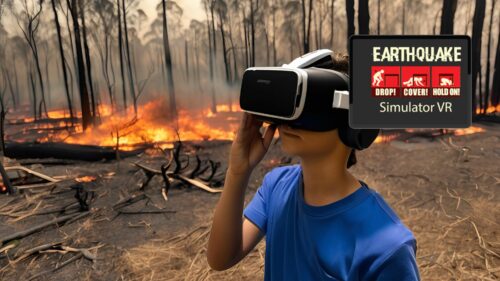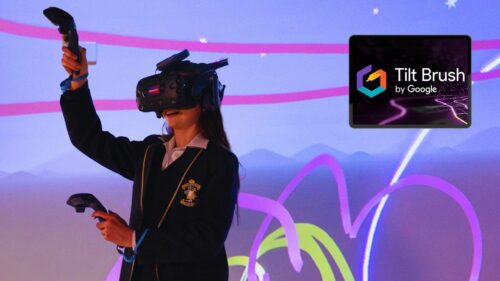Task Summary
Students will practice using their senses to develop descriptive vocabulary to help them in constructing poems. They will use Handheld Virtual Reality (HHVR) headsets and devices to help them become fully immersed in the environment in which they will use their senses to describe and write a poem about a chosen location or object.
Learn MorePreparation
Students are expected to:
- Have some background knowledge in poetry.
- Have prior experience in viewing videos in VR on the HHVR headsets.
Teachers should make sure that:
- Devices are charged.
- Devices have access to Sites in VR app.
- Students are divided into pairs or groups depending how many devices are available.
- Slide Deck/Blendspace has been checked and the teacher has accessibility.
- 360 boat image links are working.
- A copy of the Student Digital Notebook has been distributed to students and they have downloaded/ made a copy for themselves.
Activity Sequence
- Introduce the poetry lesson and recap on what students already know about poetry by asking, ‘What can you tell me about poetry? What do you know?’ This can be a discussion as a class, or small group collaborative brainstorms, if time allows.
- Ask students to turn to the person next to them and describe their place to their partner. See if the partner can guess the place. Switch places.
- Get students to write down the words and phrases they used to describe their place in their digital notebooks. Ask students to categorise their words.
- Ask students to choose their top 5 words/phrases from their list and rank them 1 to 5. Ask students: “What made them choose their top word? Why?” Get students to share with their partners or with the class as a discussion.
- Facilitate discussion around describing words and using descriptive adjectives to ‘paint a picture’ in our audience’s head – this is an incredibly important tool for poets.
- Ask students to revisit their list – Are there any words they would consider ‘boring’ and could change?
- Ask students about their categories – What types of words did they have?
- Discuss using the 5 senses as a very useful tool to give an immersive experience through poetry to their audiences. Explain each 5 senses, but in particular make note of imagery use of taste (e.g. tasting fear) and of feel (not just touch, but emotions too).
- Access whiteboard or paper for students to see, or Padlet on different screens.
- List descriptive words using 5 senses together after viewing this VR video aboard this boat. Then ask students to pair up and use the same headings of the senses and now describe a second boat together.
- Tell students that they now have all the vocabulary that they need to write their own poem; they just need to connect it together.
- Read the poem, ‘Eucalyptus Breeze,’ on Blendspace as an example of using senses to create a poem.
- Ask students to access the VR headsets with Sites in VR app. Access Nature folder. Students can then choose whichever nature 360 experience they like. They are to immerse themselves and imagine themselves there. They are not to share their chosen location with anyone! Using their 5 senses chart, they need to write down their descriptive vocab (as per previous tasks) and create a senses poem about their location.
- Once completed, students are to form small groups and share their poems without revealing which one they chose. Other group members need to try and guess which location or type of location they have written a poem about.
Download the PDF for more information.



